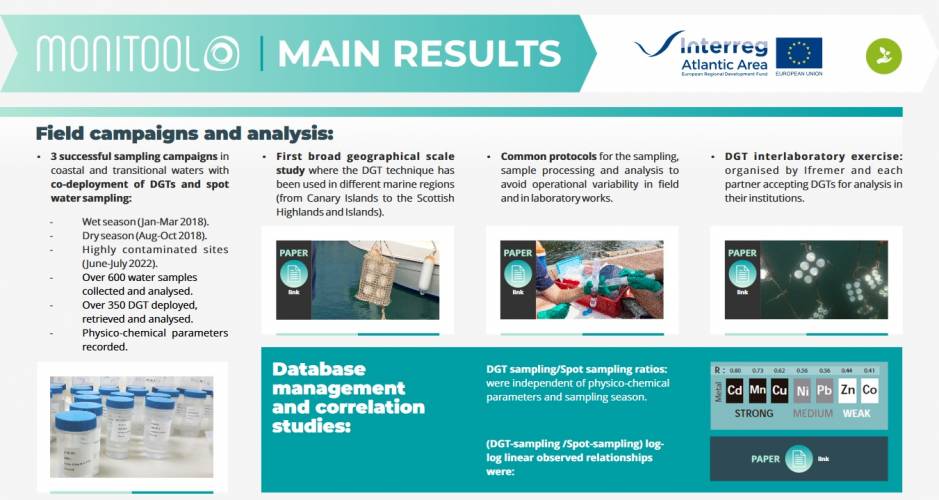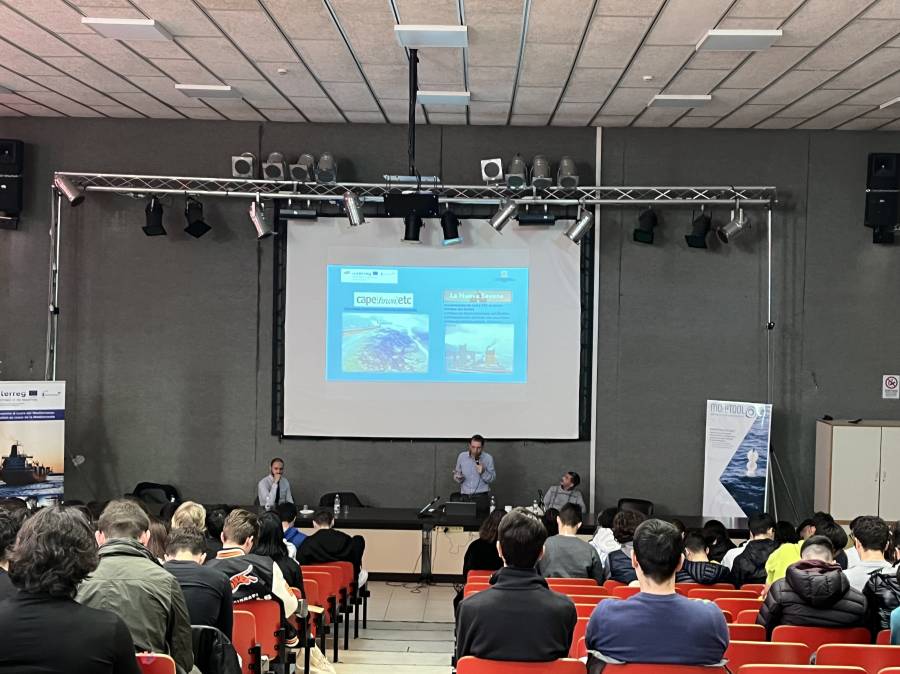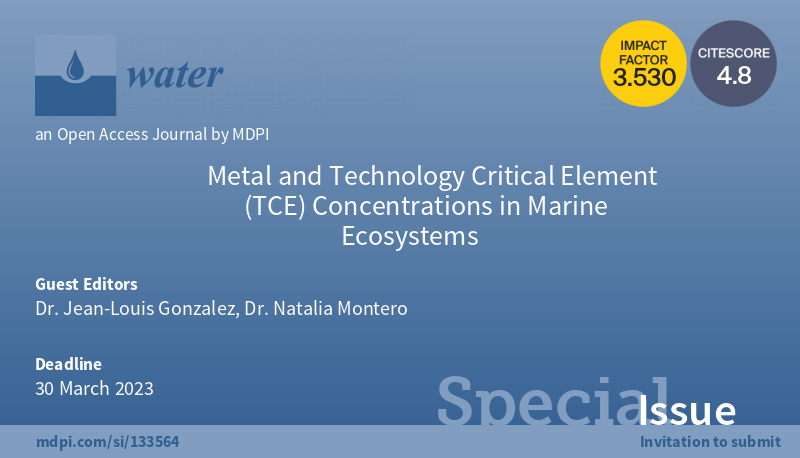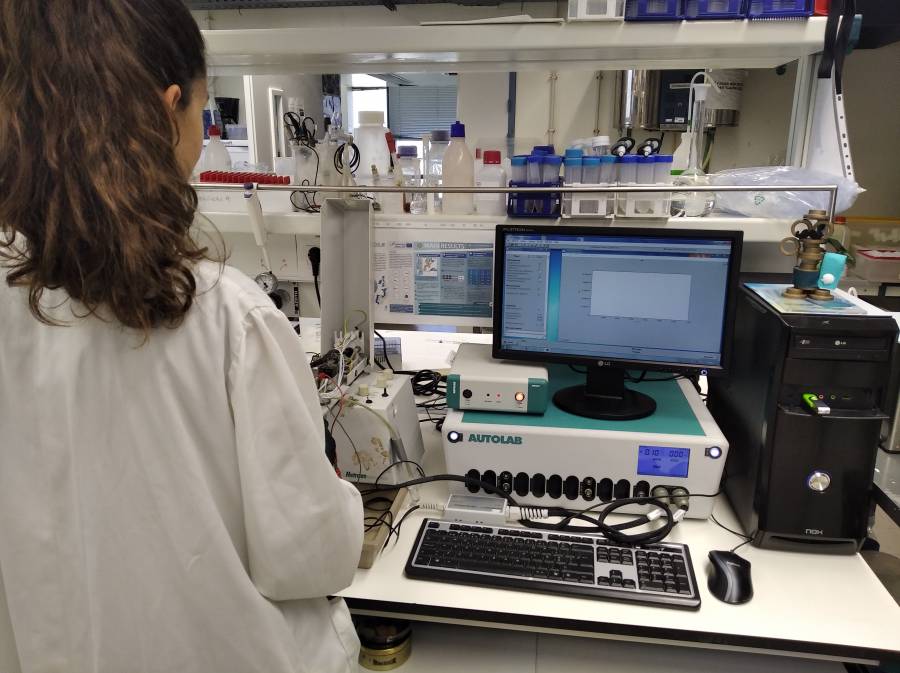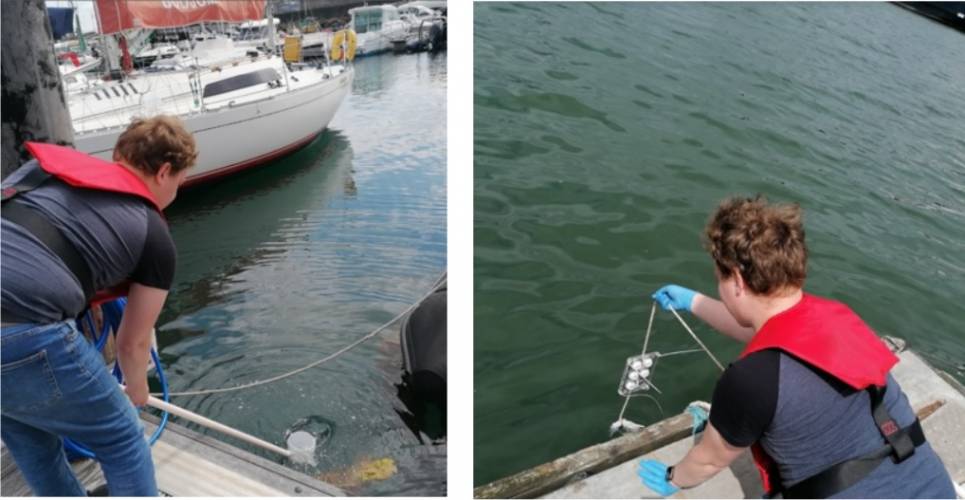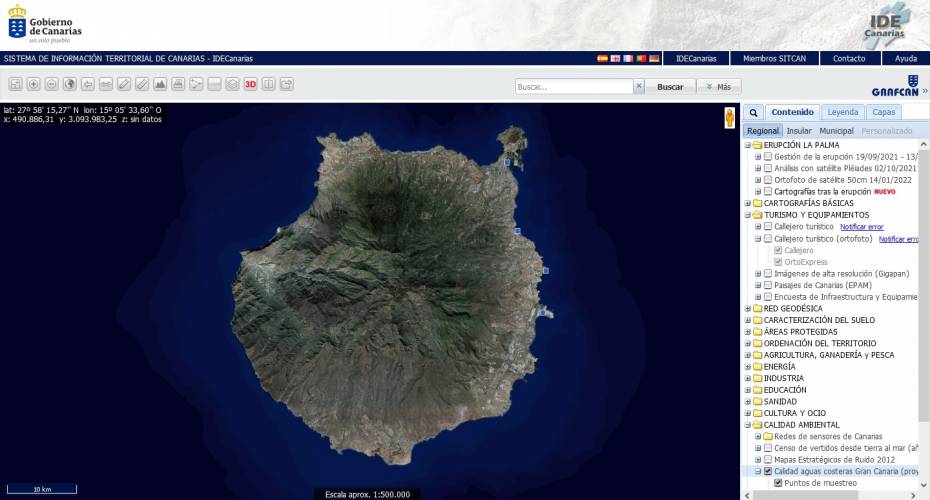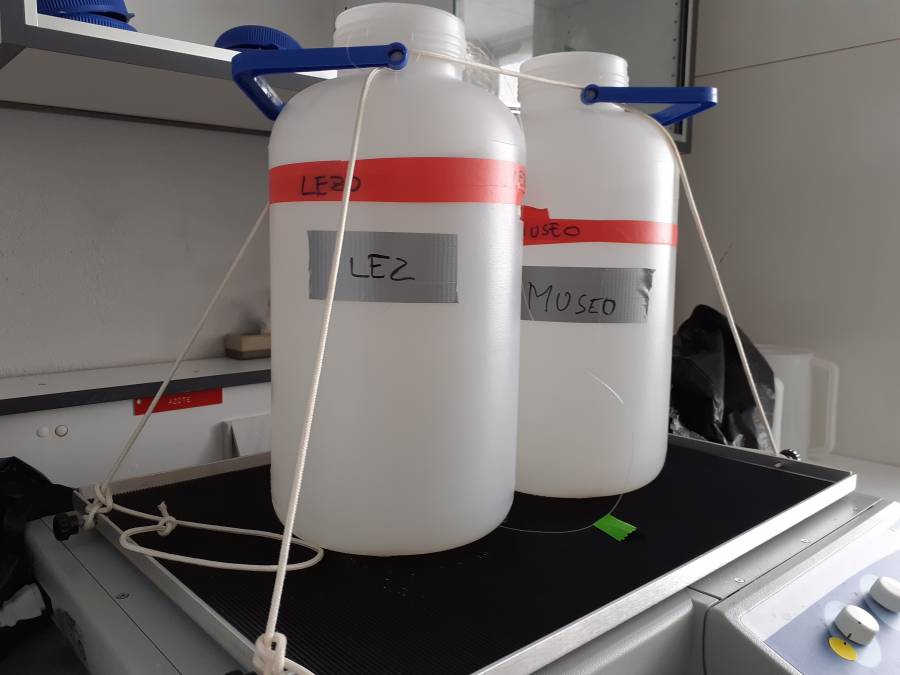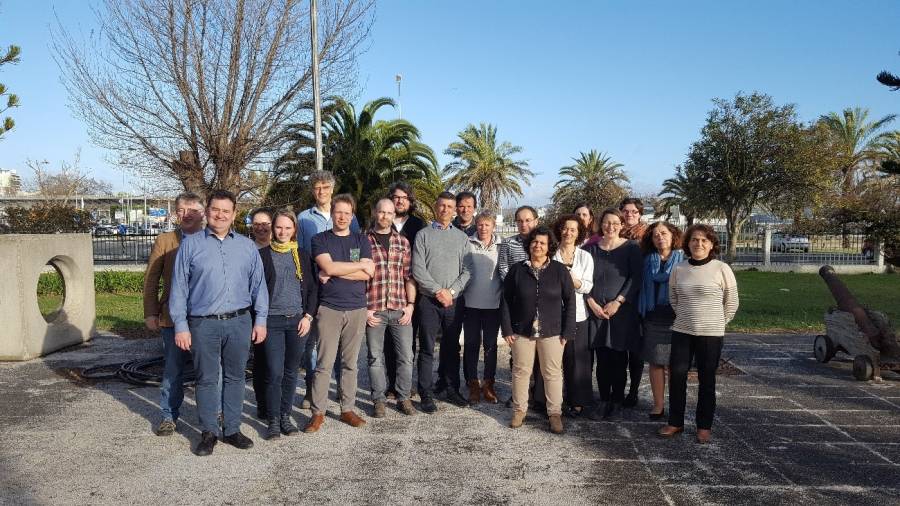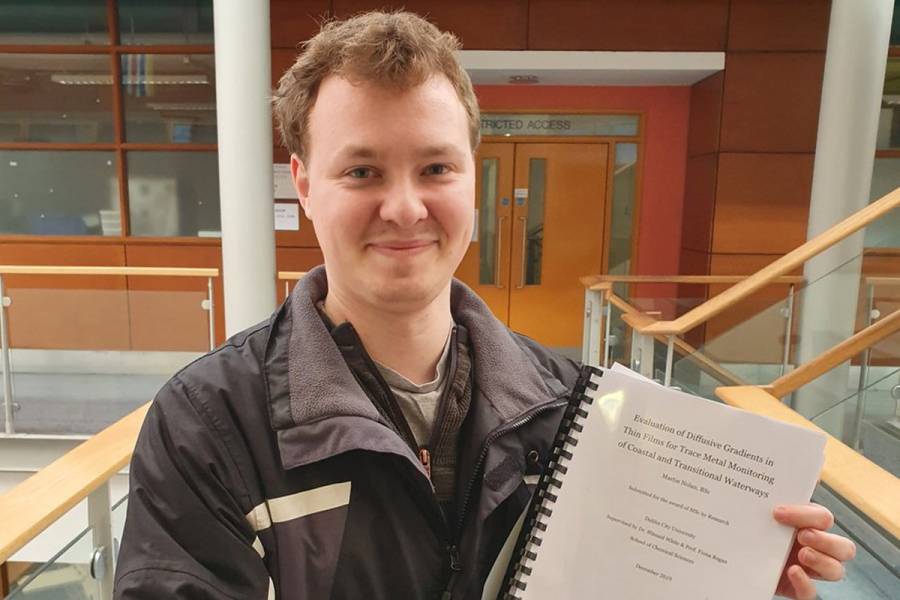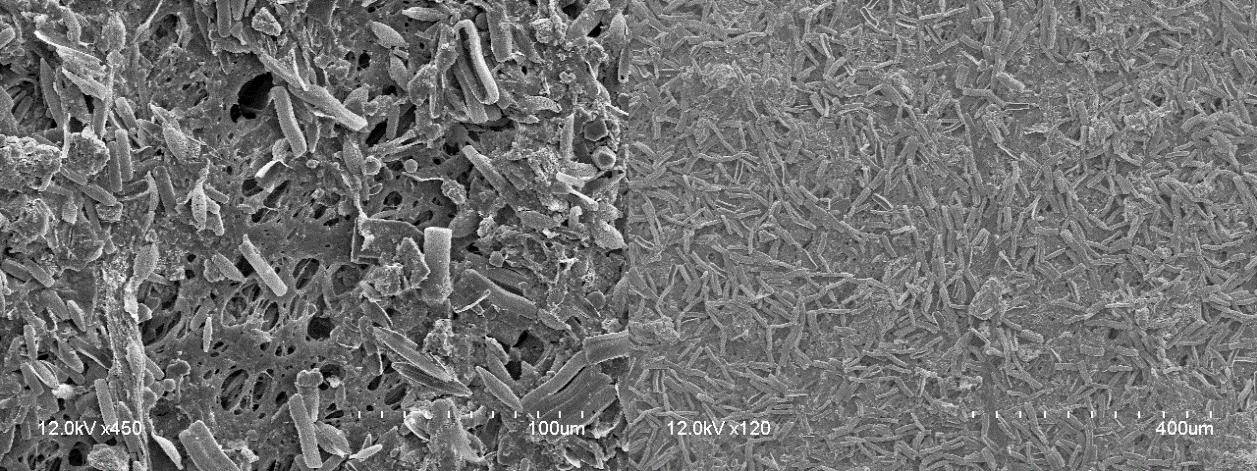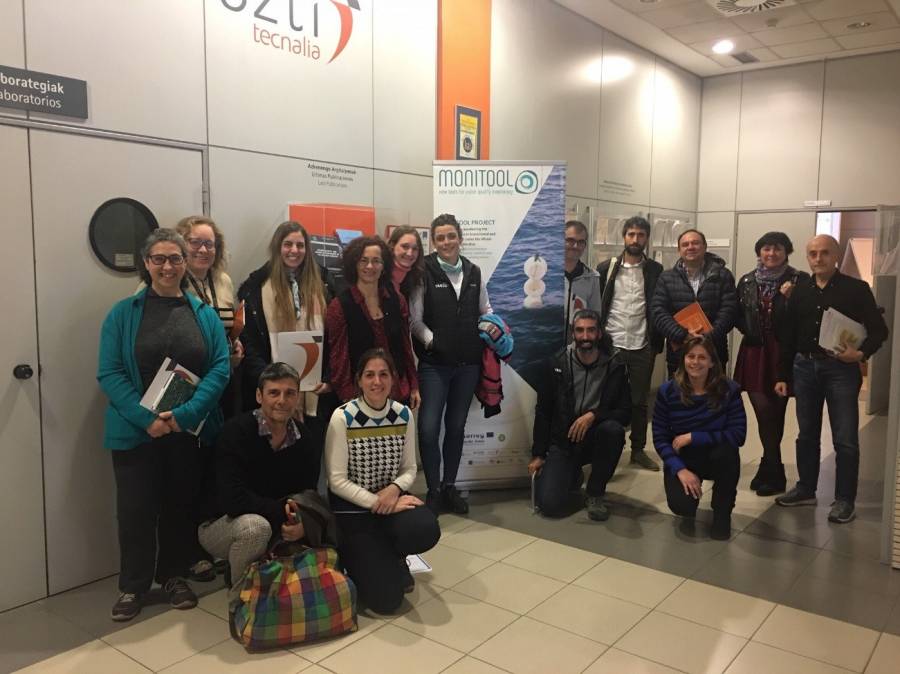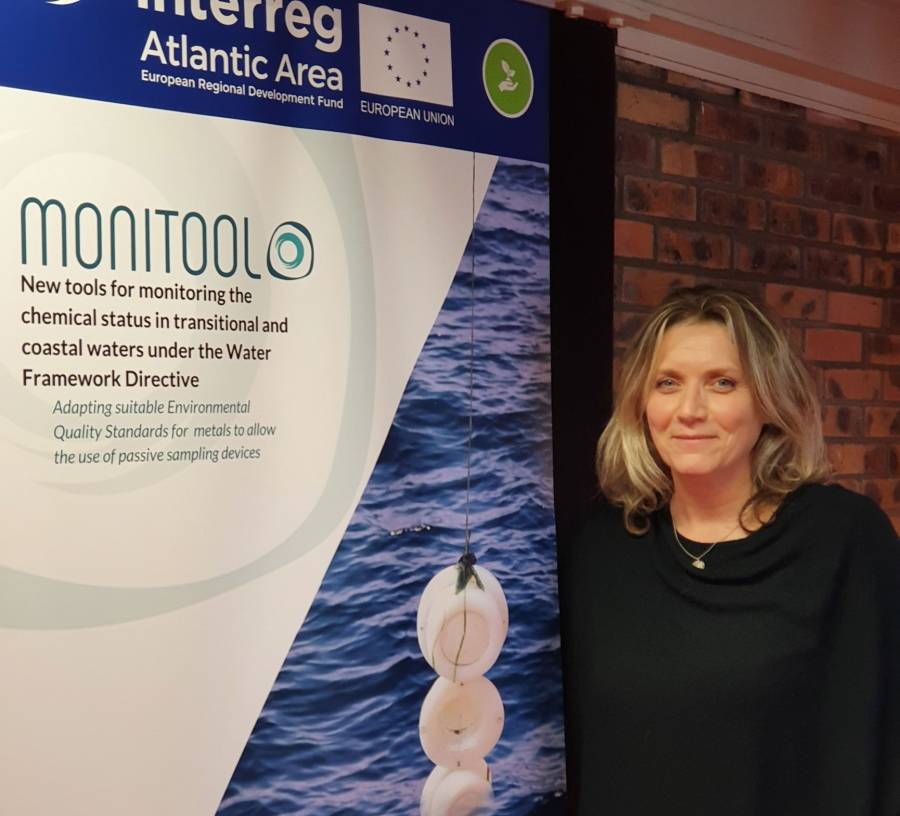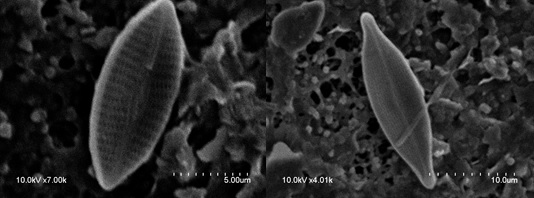 DCU analyses biofouling on MONITOOL DGTs
DCU analyses biofouling on MONITOOL DGTs
Passive sampling of contaminants in water bodies is based on the accumulation of target compounds in a membrane, resin or gel, through which water continually flows. The passive samplers used in Monitool are diffusive gradients in thin-films (DGT), and they are used to monitor metal concentrations in seawaters along the Atlantic coast. Many of the metals we are analysing in Monitool are present in seawaters in very low concentrations. However, DGTs can accumulate these metals in their binding gels so that even very small amounts of metal contaminations can be quantified in marine waters. One of the critical considerations for deploying DGTs for metal analysis is the length of time for which they will be deployed in the water bodies. In Monitool, we deploy the DGTs for 5 days, but they have also successfully been deployed for longer periods of time.
How effectively the DGT works depends on its capacity to retain the target metal compounds. This assumes that all the binding sites in the binding gel are available to bind the metal cations. However, this assumption can be compromised by biofouling. Biofouling can be defined as the attachment of flora and fauna to the exposed surfaces of the DGTs. In marine environments, biofouling can be caused by microbial species (e.g. diatoms, bacteria and fungi) and macroorganisms, including mussels, barnacles, seaweed, etc. This biofouling can change the DGT surfaces and this can impact the extent to which the metal cations diffuse through to the binding gel of the DGT, which can potentially reduce the uptake of the metal into the DGT. Conversely, it is also possible that the biofilm which forms as a result of biofouling may increase the metal concentration on the DGTs during deployment, as the biofilm itself may also bind metal cations. Within the Monitool project therefore, it is important to assess the extent to which biofouling occurs on DGTs deployed during the project, and to investigate the potential variations in biofouling between the deployment sites, which range from the Canary Islands to the Scottish Highlands, and in the Mediterranean.
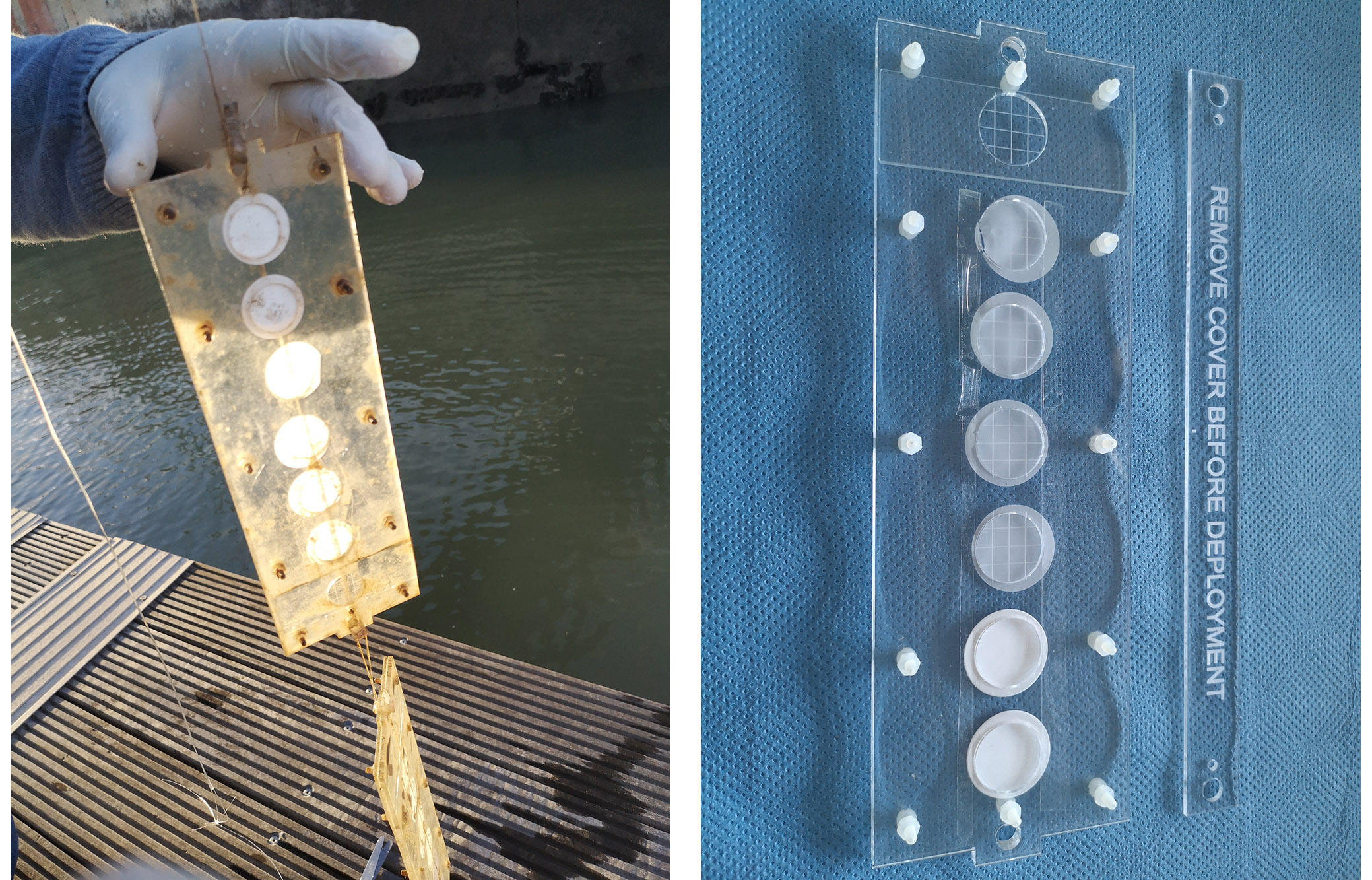
Biofouling assessment template in pristine condition (left) and after deployment (right).
Assessment of biofouling within the Monitool project is being investigated by Dublin City University, the partner coordinating the project. All participating partners deployed additional DGTs in both the wet and dry sampling campaigns, in parallel with the DGTs deployed for the Monitool project, using the same deployment protocols and deployment times. All biofouling DGTs were then returned to DCU for analysis. The DCU analysis includes visualisation of the extent of biofouling using both light microscopy and scanning electron microscopy, followed by evaluation of the biodiversity of the fouling organisms.
In the second Monitool sampling period, custom designed biofouling assessment plates have been designed at DCU and deployed by participating partners, as shown in Figure 2. These plates incorporate multiple materials, including propene sultone, polycarbonate and glass. These materials provide a variety of surfaces for attachment of fouling organisms, which will provide additional data to enable more comprehensive biodiversity assessment. Comprehensive analysis of these plates in conjunction with the deployed DGTS will allow the extent and diversity of biofouling to be evaluated across the Monitool project.




